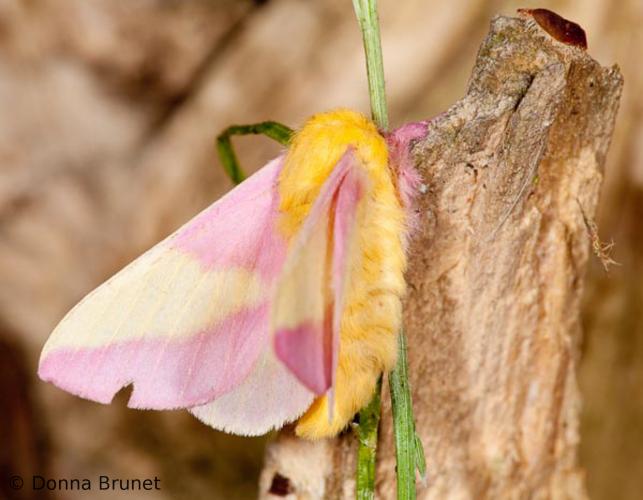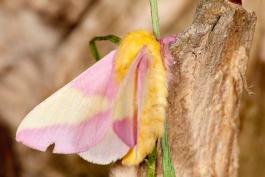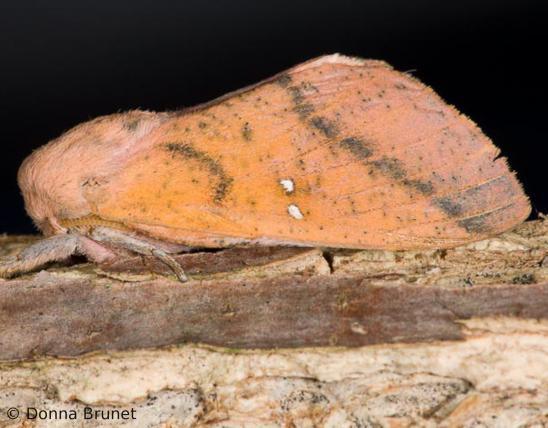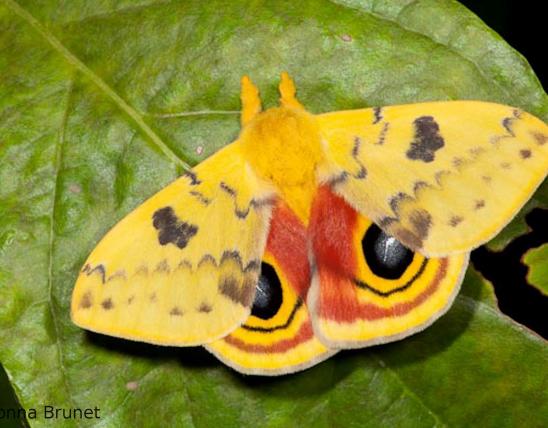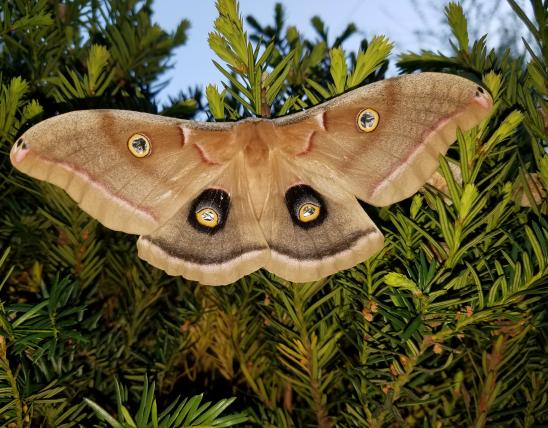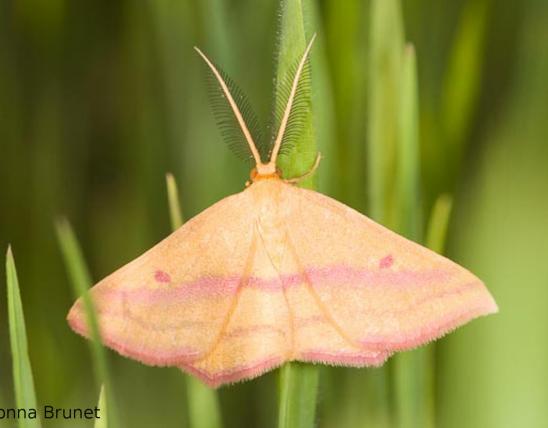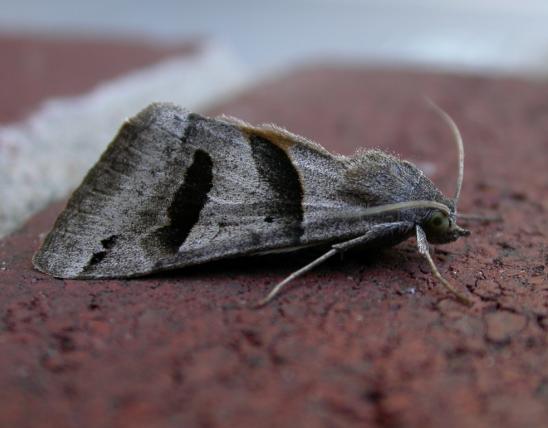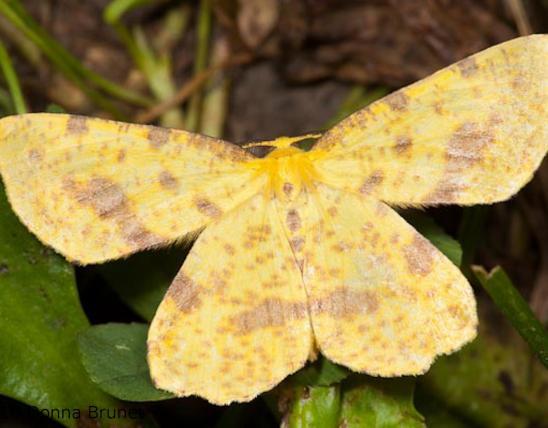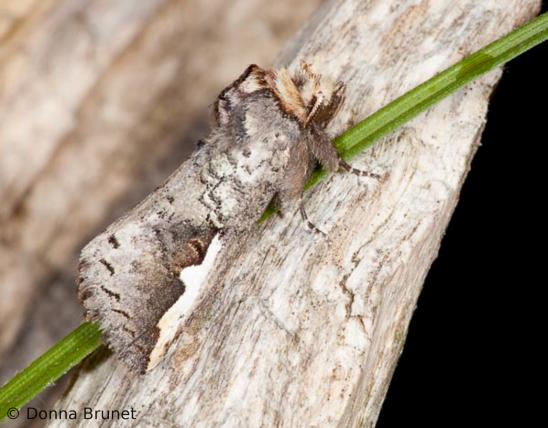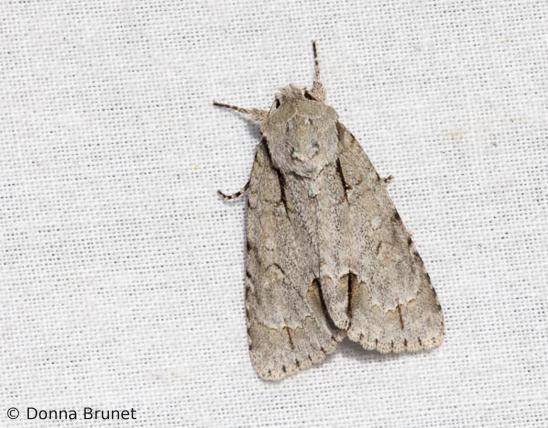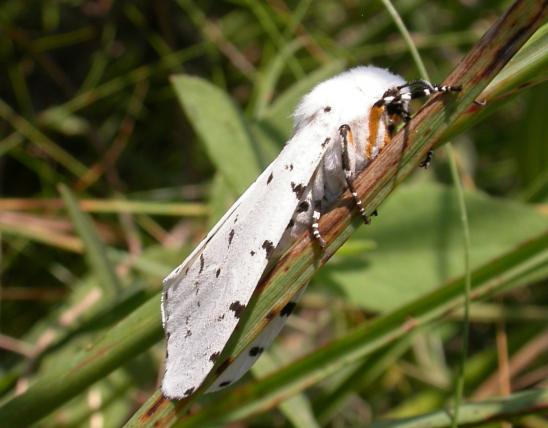
The rosy maple moth has a variable coloration. In most cases, it is white, yellow, or cream-colored, with some amount of pink at the outer and inner portions of the wings. A dark pink form is most prevalent in the Ozarks, while a lighter version occurs in central and northeastern Missouri. A very pale form, called D. rubicunda alba — alba means “white” — occurs in western and most of northern Missouri. It is all white and often has a hint of pink markings.
Larvae are greenish white with an orangish-brown head. There are two elongated black horns on the second thoracic segment (the second segment behind the head). A ring of tiny black spines encircles each abdominal segment; the ones on the top and sides are very short, but the ones lowest on the sides are longer. Spines on the hind end of the caterpillar are longer. Sometimes there is a pinkish-red patch on each side of the hind end (abdominal segments 7 and 8). In some stages, lengthwise stripes run down the body.
Similar species: The pink prominent (Hyparpax aurora) has a similar coloration, but there are differences in the wing patterns; comparing photographs should help you distinguish these two unrelated species.
Wingspan: 1¼–2¼ inches.
Statewide. See description for regional variations in coloration.
Habitat and Conservation
Rosy maple moths are usually found in and near the woodlands and parks where their food trees live. They come to electric lights at night.
Food
The caterpillar host plants include various maple species, as well as oaks, sycamore, and beech. Adults, like other members of the giant silk moth family, lack functional mouthparts, so they do not feed.
Status
Breeding resident.
Life Cycle
In Missouri, there are at least two generations each year, and adults have been found from late April into September. Females are larger than males and have more rounded wings. Rosy maple moths emerge as adults in a late afternoon and mate later that same evening. Females deposit eggs in clusters of 10–30 on the leaves of food trees. The eggs hatch about 2 weeks later. The young caterpillars are gregarious (stay in groups), but as they grow larger, they live as individuals. The caterpillars pupate in the earth and overwinter as pupae.
Human Connections
An author for BugGuide commented about this species, “if it weren't so common, it would generate greater excitement — it is so beautiful.” But the clergyman and social reformer Henry Ward Beecher reminded us, “the art of being happy lies in the power of extracting happiness from common things.”
Ecosystem Connections
Periodically, there are population booms of the caterpillars, when they can become pests of maple trees, sometimes completely defoliating them. Fortunately, healthy trees can withstand occasional pest outbreaks and simply grow new leaves. When trees are already stressed, however (by drought and/or disease, for example), rebounding can be energetically costly, and some trees might not survive stress added upon stress.
